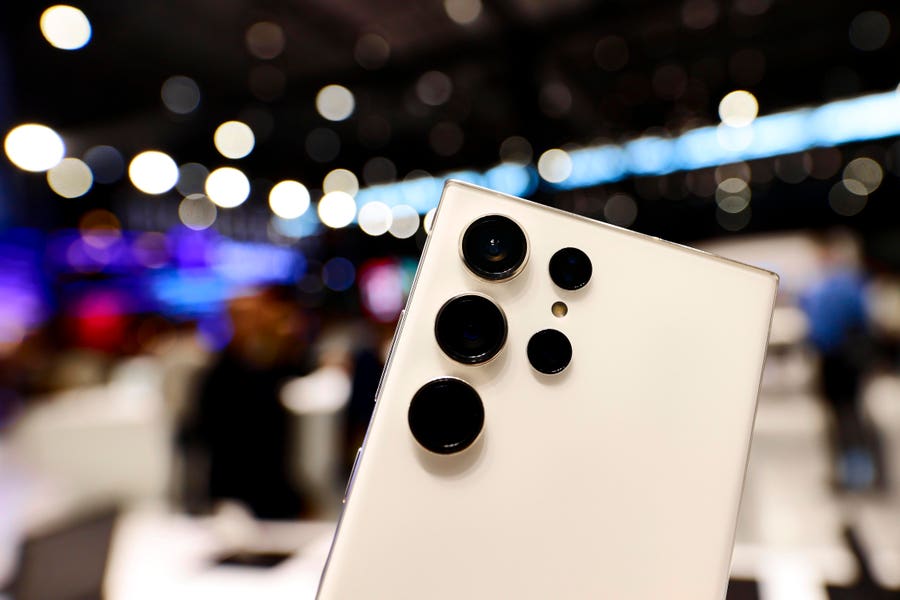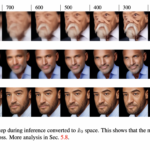Concerns about potential reductions in the camera features of the Galaxy S24 Ultra compared to its predecessor, the S23 Ultra, seem unfounded based on the latest preview clips released by Samsung before the highly anticipated Galaxy Unpacked event this month. However, there is a caveat to consider.
Samsung recently announced “Zoom with Galaxy AI is coming,” showcasing images of spherical hot air balloons with camera zoom capabilities of at least 10x, accompanied by an effect that elongates objects in the scene to comical sizes.
While there was speculation that the Galaxy S24 Ultra might move from the 10x optical telephoto lens of the Galaxy S23 Ultra to a 5x version with a sensor resolution of only 10 megapixels, the deliberate choice of a 10x zoom range suggests a purposeful decision.
The images of the hot air balloons seem to have been taken in low-light conditions, possibly during the early hours before sunrise. Long-range telephoto optics, which typically struggle in low-light settings compared to wide lenses, present a challenge. It is anticipated that a combination of digital camera technology and new AI controls will bridge the gap between 5x and 10x magnification. The enhanced 50-megapixel resolution of the new 5-inch camera is expected to significantly enhance digital zoom capabilities.
The intriguing “object focus” effect demonstrated in early video clips is a unique feature. The videos show a woman using pinch-to-zoom gestures on ice cream cones and plush toys, causing them to expand in real-time. This feature, along with the low-light capability mentioned earlier, appears to be part of the “Zoom with Galaxy AI” offering.
By examining the filenames of the official teaser videos, a common term “Eureka” is identified, suggesting a connection between these new features and components of Samsung’s recently leaked Eureka AI software. The anticipated Eureka AI features “Nightography Zoom” and “Generative Edit,” aligning with the features hinted at in Samsung’s teasers.
However, some Eureka functions may require a Samsung account and internet connectivity, indicating potential cloud-based processing for certain AI-intensive features. This hybrid approach could resemble Google’s exclusive “Video Boost” feature, currently only available on the premier Pixel 8 Pro, potentially opening the door for similar functionalities to reach older Samsung models like the Galaxy S23 Ultra.
The upcoming launch of the Galaxy S24 Ultra promises an exciting advancement for Samsung, despite initial leaks suggesting significant changes in camera technology and the introduction of new AI capabilities.
On January 17, all details will be revealed at “Galaxy Unpacked.”
Further insights into the Galaxy S24 Ultra’s camera capabilities are provided through insider information. Renowned source Ice Universe claims to have seen sample photos taken at 10x magnification with the Galaxy S24 Ultra, confirming their superior quality compared to current standards. Additionally, ongoing optimization of the camera software indicates room for further improvements before the device’s release.
This recent development contrasts with a previous leak from November 24, which raised concerns about issues with the new telephoto lens of the Galaxy S24 Ultra. Samsung’s advancements in image processing algorithms suggest significant improvements within a short timeframe, positioning the S24 Ultra favorably for high-magnification photography despite the shift from the 10x telephoto optics of the S23 Ultra.
For Google product enthusiasts, Ice Universe hints at a substantial upgrade to the video zoom capabilities of the Galaxy S24 Ultra.
According to the latest leaks, Samsung’s flagship device will allow seamless switching between all cameras, including front-facing cameras, while recording 4K video at 60 frames per second. Furthermore, the device can record 4K video at 120 frames per second, showcasing advancements in video recording capabilities. The transition between lenses during recording relies on sophisticated image processing to maintain quality and minimize disruptions, though challenges may arise at higher frame rates that demand faster processing speeds.
Efforts to smoothly switch between lenses during video recording to uphold quality and avoid abrupt changes are praiseworthy. However, limitations in processing speeds at higher frame rates may affect the effectiveness of this feature. The ability to switch lenses without interrupting recordings, especially when capturing fast-paced scenes, could significantly enhance the user experience.






